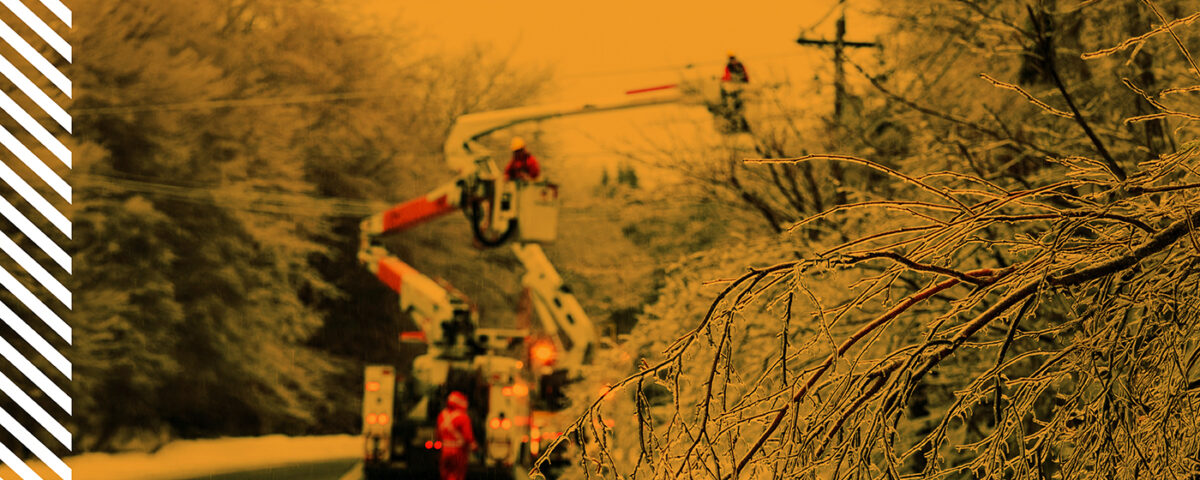What causes a galloping power line and how can it impact power transmission and distribution?
Galloping power lines are typically caused by ice or snow and high winds occurring simultaneously. Some winter precipitation conditions create icicles and other ice formations on power lines and conductors. The ice buildup changes how wind and air impact the now misshapen, ice-covered line, causing the power line to bounce.
Once the lines get going, they can bound and buck enough to hit another line, potentially causing a power outage or the line to fall.
There is not much PVREA can do to alleviate galloping lines since the wild motion is caused by Mother Nature. To help prevent this, we try to reduce impacts. We install special mechanisms on lines where galloping lines have been an issue to help reduce galloping.
Downed power lines are not just a result of winter storms. Any storm with high winds can knock down power lines and blow trees and limbs onto power lines.
Keep the Following Safety Tips in Mind:
- Lines do not have to be arcing or sparking to be dangerous.
- If you see power lines on the ground, stay at least 50 feet away, warn others to stay away, and contact PVREA at 800.432.1012 or call 911.
- Any utility wire, including telephone or cable lines that are sagging or down, could be in contact with energized power lines. Do not try to guess the type of line — stay away from all lines and report any utility line you think is dangerous.
- Be alert to the possibility that tree limbs or debris may hide electrical hazards. Downed power lines can energize objects around them, such as chain-link fences and metal culverts.
- Keep in mind that a downed power line could become re-energized during power restoration efforts or improper use of generators.
- If you are in a car that has contacted or is near a downed power line, stay in your vehicle. Wait until the utility crew has arrived, de-energized the line, and tells you it is safe to exit. Warn others not to approach the car.
- Only exit a vehicle near or on downed lines if there is a fire. If this happens, cross your arms over your chest and make a solid jump out and away from the car with both feet together. Then hop away at least 50 feet or more while continuing to keep both feet together.
Source: SafeElectricity.org
